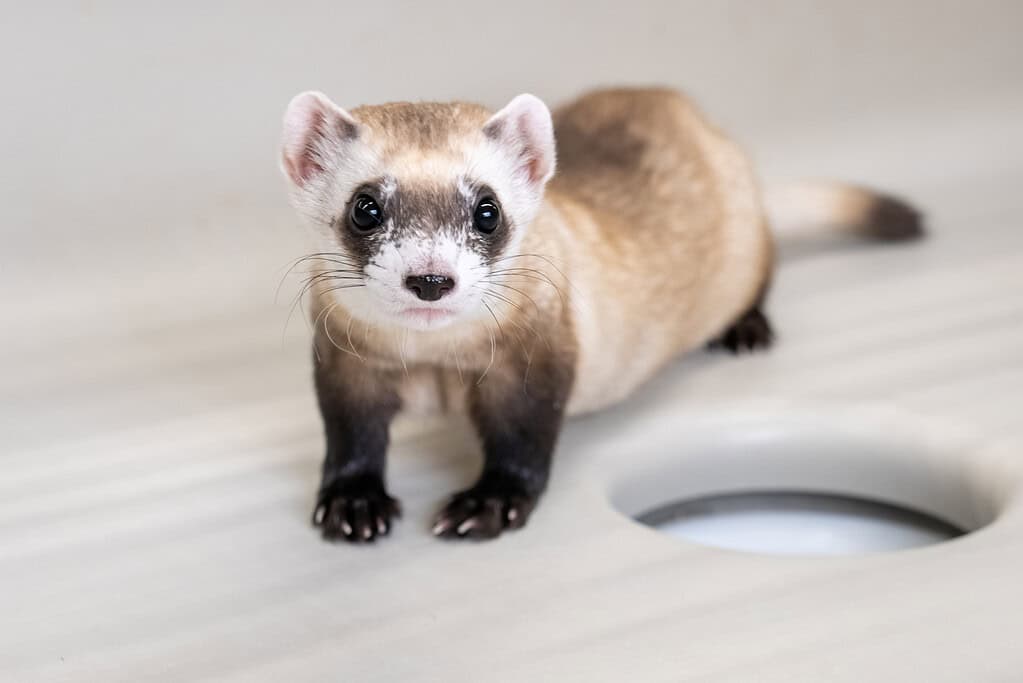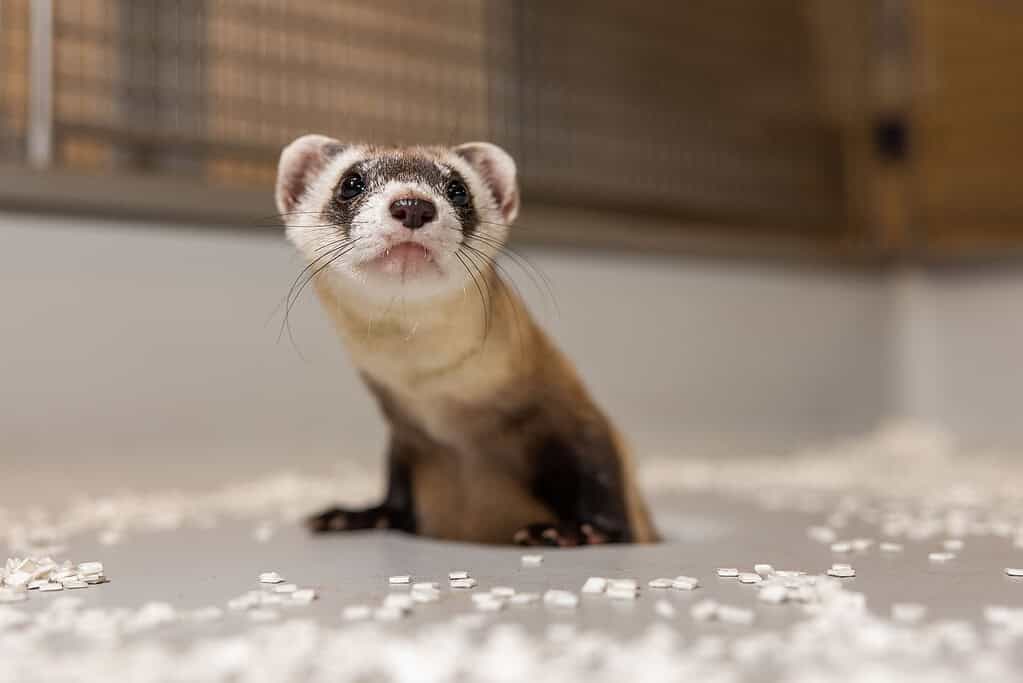Noreen and Antonia, two recently-born black-footed ferrets, are miraculous creatures. Scientists at US Fish and Wildlife Services (USFWS) used genetic material collected from a female ferret 45 years ago and cloned her. This is more than just an experiment: researchers hope the cloned animals will play an important role in reviving their endangered species.

Currently, there are only 370 living black-footed ferrets and all of them have descended from the same seven ferrets bred during a recovery program in the 1980s. This means that their population has low genetic diversity which adds even more problems to an already troubled species.
“Without an appropriate amount of genetic diversity, a species often becomes more susceptible to diseases and genetic abnormalities, as well as limited adaptability to conditions in the wild and a decreased fertility rate. Limited genetic diversity makes it extremely difficult to fully recover a species,” writes the US Fish and Wildlife Service (USFWS).
But cloning could change the situation.
Researchers from USFWS claim that genes from Noreen and Antonia may introduce some genetic diversity and save the species from extinction.
What’s so special about the cloned ferrets?
In the 1800s, there were nearly one million black-footed ferrets. They primarily ate prairie dogs, small burrowing rodents native to North America. However, a rise in agricultural activities in the 1900s led to the elimination of prairie dogs in large numbers as they destroyed crops.
This further caused a sharp decline in the population of black-footed ferrets. Their population was not recovering, and they almost completely disappeared by 1979, making many experts believe that the species had gone extinct.
Surprisingly, two years later, a cattle rancher discovered a small group of black-footed ferrets in Wyoming. This rediscovery encouraged conservationists to launch a breeding program to increase the population of these animals.
Seven ferrets successfully reproduced during the program triggering the birth of more and more ferrets over time. But, naturally, genetic diversity was limited. However, Willa, the female ferret whose tissue samples were used to clone Noreen and Antonia, wasn’t among those seven. So, no existing black-footed ferrets had her genes — until now.
“These samples contain three times more unique genetic variations than found on average in the current population. Introduction of these novel, currently unrepresented genetic material may provide a significant boost to the genetics of the current black-footed ferret population.” USFWS stated.
There aren’t two but three cloned ferrets
To create Noreen and Antonia, researchers first took egg cells (oocytes) of a domestic ferret and removed their genetic material. They then replaced the content of the oocytes with Willa’s.

These eggs are then exposed to an activation stimulus (can be either an electric shock or some chemical treatment), leading to the formation of embryos. The embryos were then transferred into a domestic ferret who eventually gave birth to the cloned animals.
However, Noreen and Antonia aren’t the only cloned ferrets. In Feb 2021, USFWS announced the birth of Elizabeth Ann, the first cloned black-footed ferret, also created using Willa’s frozen cells.
Unfortunately, Elizabeth can’t produce offspring because of hydrometra, a medical condition caused by the accumulation of fluid in the uterus. The condition adversely affects the fertility and reproductive health of the animal.
According to the researchers, hydrometra is also observed in naturally-born ferrets and isn’t due to the cloning process.
Elizabeth is currently at the National Black-footed Ferret Conservation Center in Colorado, which is also home to Noreen. Antonia, on the other side, resides in Virginia at the Smithsonian’s National Zoo and Conservation Biology Institute.
Cloning is not a replacement for conservation
Noreen and Antonia will become reproductively mature within a year, and then they will be ready to pass on their novel genes to the next generation of black-footed ferrets. Will this experiment be successful in boosting the population of their species? Only time will tell.
However, one important point to note here is that cloning shouldn’t be viewed as a replacement for traditional conservation strategies. Instead, we should consider it one of many tools that can be used in species recovery alongside other available options.
“Some people think if you have (species) in a freezer, you don’t need them in the wild. That’s just not true. “We can’t lose what we have in the wild. But if we do, it’s good to have an insurance policy,” Seth Willey, a deputy assistant regional director at USFWS, told Scientific American.
Essentially, being able to clone ferrets doesn’t mean we don’t need to save them anymore. Cloning can introduce new genes and help in reviving animals but it doesn’t solve the problems a species faces related to its natural habitat.
This is why conservation programs focusing on habitat protection, management, breeding, and recovery of wild animals will always be important and relevant.









